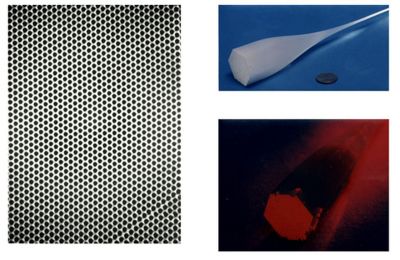Engineered nanomaterials (ENMs) are now ubiquitous, but safety studies have lagged behind technological developments. EU-funded research will establish an ENM safety classifier akin to material safety data sheets to ensure safety for humans and the environment.
ENMs have improved products and devices in fields from coatings and
composites to electronics, biomedicine, energy and the environment. The
very small size of these materials — at least one dimension less than
100 nm to qualify — imparts very high reactivity and, simultaneously,
the ability to cross biological barriers. This is a potentially
dangerous combination and standardisation of testing and classification
of risk to humans and the environment is imperative.
Thirty-five partners with extensive expertise in omics research
(transcriptomics, proteomics and epigenomics) are identifying the
characteristics of ENMs that determine their biological hazard potential
with EU funding of the project
NANOSOLUTIONS.
The consortium plans to establish biomarkers of ENM toxicity to be
used in assessments of safety and toxicity across species. The
overarching goal is to provide the tools to develop an ENM safety
classifier based on materials characteristics. The resulting classifier
will do for ENM what the material safety data sheets do for chemicals.
In particular, it will enable manufacturers to select the
appropriate ENM for a job with minimal risk, meeting regulations and
reducing required testing costs and time. Regulatory officials will be
able to prioritise safety issues and the general public will have
greater confidence that their health and the environment will not be
harmed.
All issues regarding the computational background and data formats
have been addressed along with computational methods for feature
selection using fuzzy logic. ENM material has been produced and
functionalised, testing protocols for many of the tests have been
established, and testing has begun across a variety of experimental
paradigms. These include cell cultures of human endothelial cells with
surface modifications and in vivo positron emission tomography studies
of the biodistribution of titanium oxide nanoparticles. The team has
successfully established an ex vivo placenta perfusion model as well.
Testing and validation of the tool will be done in close
collaboration with ENM manufacturers and results will be distributed to
relevant regulatory agencies. NANOSOLUTIONS will thus ensure that the
comprehensive studies have the largest possible impact.

